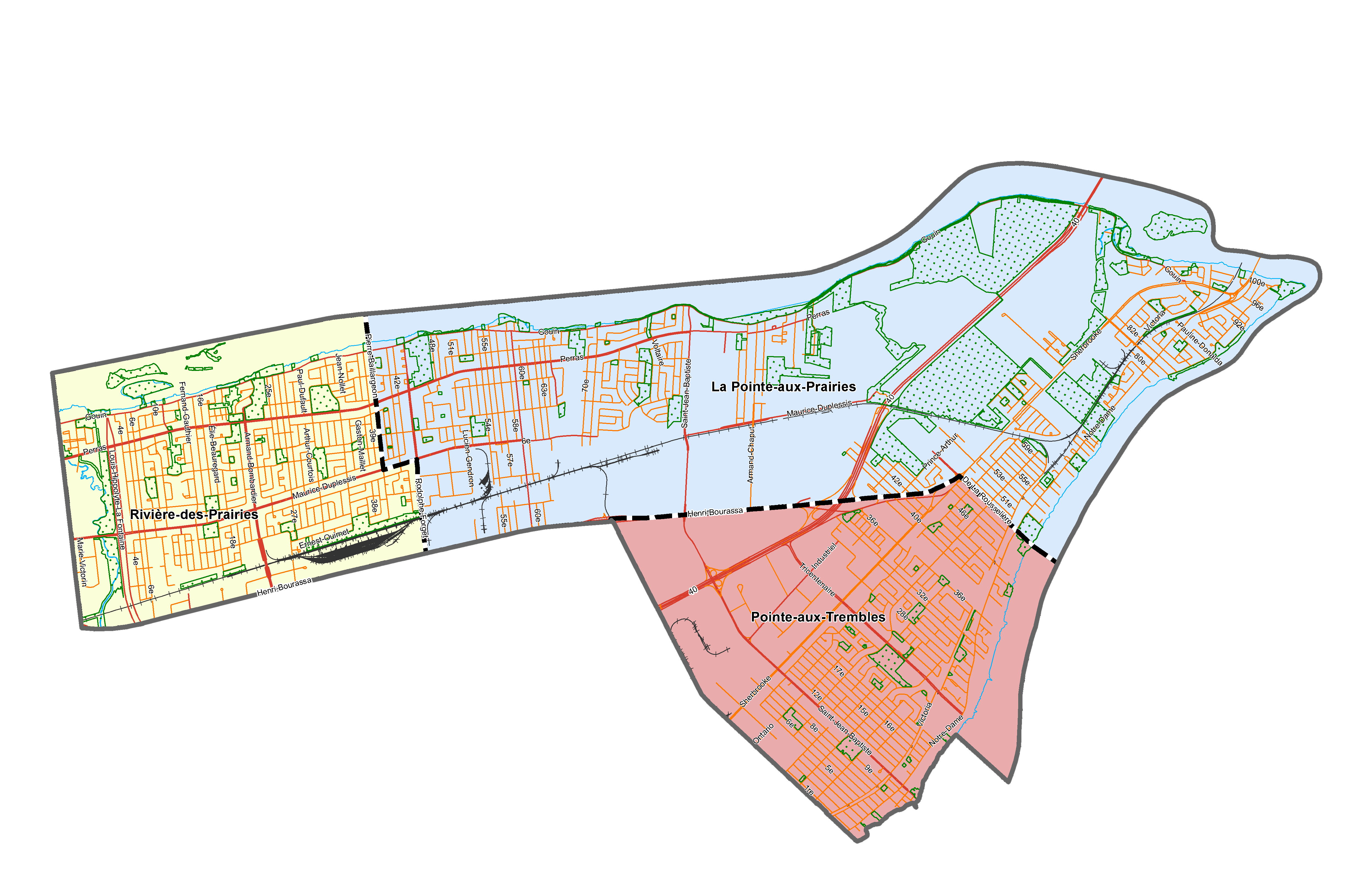
HISTORY OF POINTE-AUX-TREMBLES
The origin of Pointe-aux-Trembles dates as far back as 1674. A former municipality bore the name from that time up until it was annexed by the City of Montréal in 1982.
One of the attractions of the borough of Rivière-des-Prairies–Pointe-aux-Trembles is Fort Pointe-aux-Trembles on the Island of Montréal. This historic site was built in 1670 to defend the part of the island where the village of Ville-Marie once stood. During the first part of 1660, the Sulpician religious order colonized this part of the island outside Ville-Marie. Due to a threat of Iroquois attack, a fort was erected to defend the colonization of the Island of Montreal and protect the banks along the St. Lawrence River.
At the east end of the area, near Gouin Boulevard and Rue Bureau, stands a bronze plaque commemorating the historic battle between Patriots and Iroquois. A series of historic sites identified along Rue Notre-Dame stand as reminders that Pointe-aux-Trembles was at one time central to the history of New France.
Pointe-aux-Trembles flourished in the first half of the 18th century thanks to the construction of the Chemin du Roy, a road linking Montréal and Québec City. The river gradually flooded the road, however, and it was eventually replaced by a road along the route of the present-day Rue Notre-Dame East.
The municipality of the parish of Pointe-aux-Trembles was formally created in 1845. The second half of the 19th century saw Pointe-aux-Trembles’ rural orientation gradually give way to increasing urbanization. The village grew, essentially as a result of residential, commercial and institutional development, and the mid-20th century was characterized by rapid population growth. Neighborhoods gradually developed and new business areas grew up along Boulevard Saint-Jean-Baptiste and Sherbrooke Street.
The town of Pointe-aux-Trembles experienced financial difficulties and was annexed by the City of Montréal in 1982. Since the 2002 municipal mergers, Pointe-aux-Trembles has been part of the borough of Rivière-des-Prairies–Pointe-aux-Trembles. The borough boasts many historical attractions, including the Pointe-aux-Prairies Nature Park, the Moulin à vent de Pointe-aux-Trembles windmill, the Beaudry house and several other heritage sites. The Pointe-aux-Trembles windmill was classified by the Québec Ministry of Cultural Affairs as archaeological property in 1982, and has been open to the public since 2009.
Today, Pointe-aux-Trembles is booming, and many people are choosing to settle in an area that showcases cultural heritage, where the aim is to retrieve the village character of one of Montréal’s historic centres.
HISTORY OF RIVIÈRE-DES-PRAIRIES
Up until 1671, founding a parish on the Rivière des Prairies side of the island of Montréal was an impossible dream, as the Iroquois used that river to gain access to the island. To put an end to the Iroquois incursions and fortify the tip of the Island of Montréal, Dollier de Casson, Seminary superior, Sulpician priest and seigneur of the Island of Montréal, created two fiefs in 1671. He granted land to a number of settlers willing to become soldiers when necessary to assist the two seigneurs, Carrion Dufresnoy Phillippe and Paul Maurel.
The first land was granted on February 5, 1671, to Jacques Molinier, who sold it on June 5, 1675, to Jean Grou, husband of Anne-Marie Goguet, a cousin of Marguerite-Bourgeoys, the founder of the Congregation of Notre-Dame. This tract of land is listed as lot number I on the land register of the Seminary of St. Sulpice; it is crossed by the Des Roches creek which at this location is called the “Coulée Grou”.
Up until 1689, Jean Grou’s neighbour was Joseph-Charles Ailleboust des Muceaux, who was married to Catherine Le Gardeur, and was a Montréal civil and criminal court judge and Acting Governor of Montréal.
It was on Jean Grou’s land that the battle of July 2, 1690, took place between a small group of about 25 men and a hundred or so Iroquois. Jean Grou was taken prisoner and removed to the village of Onneyouts, along with three of his comrades.
One day, in February 1691, Anne-Marie Goguet received a letter from Father Millet, a Jesuit missionary prisoner of the Iroquois, informing her that her husband, Jean-Grou, along with his companions, had been burned alive. Anne-Marie Goguet became a widow with seven children; on October 26, 1693, she was remarried to Jacques Desnoyers dit Lajeunesse, a soldier who had arrived in 1683.
In 1925, Joseph La Jeunesse donated a plot of land to the Historic Sites and Monuments Board of Canada, and a stone cairn was erected on the site. On September 3, 1939, a great nationalist gathering took place at Coulée Grou, and Abbé Lionel Groulx, historian and descendant of Jean Grou, paid tribute to his ancestor and all the settlers of New France who had fought there.
The stone cairn was replaced in 1971 by a new monument and a plaque with an engraved text entitled The Battle of Coulée Grou. Many of the descendants of Jean Grou and Anne-Marie Goguet, as well as of her second husband Jacques Desnoyers dit Lajeunesse, still live in the area.
ST-JOSEPH CHURCH, JEWEL OF THE BOROUGH’S HERITAGE
The beautiful Saint-Joseph Church, located at 10050 Gouin Boulevard East, is an important heritage site for the borough, both because of its beauty and because of its historical significance. That is why a team from the borough’s parks and facilities department chose a site near the church, namely Saint-Joseph Park, to design the first mosaiculture to represent the borough at the inter-borough competition during Mosaïculture International Montréal 2003.
The church and rectory are a perfect example of the parish nucleus around which a traditional village was built. Rivière-des-Prairies is in fact one of the oldest villages on the island of Montréal.
Built between 1875 and 1879, the church was designed by Victor Bourgeau, a Montréal architect with many major projects to his credit.
Source: Historical Society of Rivière-des-Prairies




